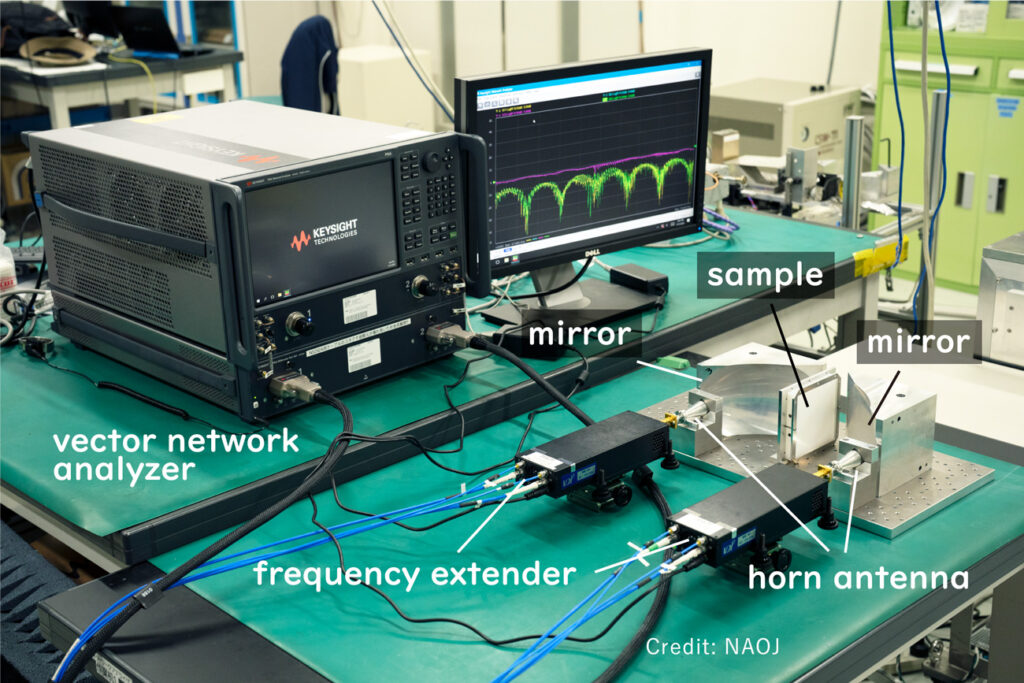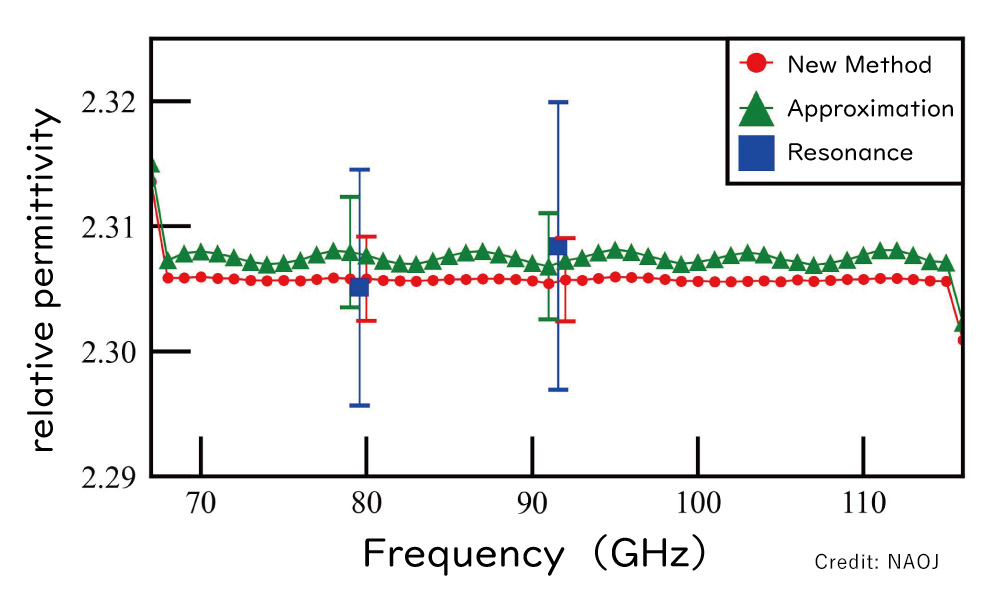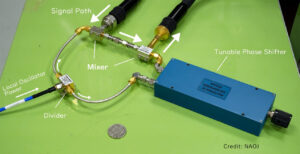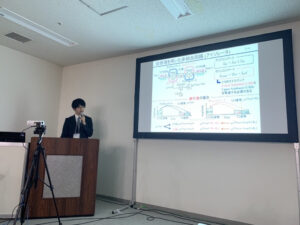Accurate Measurement of Permittivity Advances Radio Telescope Receivers and Next Generation Telecommunication Networks
Credit: NAOJ
Researchers invented a novel method to measure the permittivity of insulators 100 times more accurately than before. This technology is expected to contribute to the efficient development of sensitive radio receivers for radio telescopes as well as to the development of devices for the next generation communication networks, “Beyond 5G/6G.”
Permittivity is a value that indicates how electrons inside an insulator react when a voltage is applied to the insulator. It is an important parameter for understanding the behavior of radio waves as they travel through insulators. In the development of telecommunications equipment, it is necessary to accurately determine the permittivity of materials used for circuit boards and building columns and walls. For radio astronomy, researchers also need to know the permittivity of components used in radio receivers.
By devising a calculation method for electromagnetic wave propagation, the research team developed an analytical algorithm that derives the permittivity directly rather than by approximation. The team, consisting of researchers and engineers from the National Astronomical Observatory of Japan (NAOJ) and the National Institute of Information and Communications Technology (NICT), then used the new method to measure lens material for a receiver being developed for the Atacama Large Millimeter/submillimeter Array (ALMA) and confirmed that the results were consistent with other methods, demonstrating its effectiveness in actual device development.
“The newly developed method is expected to contribute to not only the design of radio telescope components, but also to the development of high-frequency materials and devices for the realization of next-generation communication networks (Beyond 5G/6G) using the millimeter wave/terahertz band,” says Ryo Sakai, an engineer at NAOJ and the lead author of the research paper published recently.
Reducing the error due to approximation by a factor of 100 speeds up the development process. If the permittivity of individual materials is measured inaccurately, the actual fabricated product may not meet the target performance. If the permittivity is known accurately from the design stage, unnecessary trial and error can be reduced and costs can be cut.
Photo of the permittivity measurement system. The sample to be measured is placed between the mirrors. Millimeter/terahertz waves are emitted from one horn antenna and injected into the sample, and their transmission characteristics are measured by a vector network analyzer to obtain the permittivity.
Results of permittivity measurements of materials using the new method, the conventional approximation analysis, and the resonance method. The new method, which does not use the approximation, has demonstrated that the permittivity can be measured continuously over a wide frequency range with a small error.
Conventionally, there are several methods used for measuring permittivity. One method that can accurately measure permittivity is the “resonance method,” but in that case, the material to be measured must be placed in a device called a resonator, which requires precision processing of the material, sometimes less than several hundred micrometers thick. Another drawback is that the permittivity can only be measured at several specific frequencies. Since it is necessary to measure the permittivity of various materials during the development stage of a device, if high-precision processing is required for each measurement, the development process will take a long time. On the other hand, the "free-space method," which has fewer of these drawbacks, is also used, but in this case, an approximation has been used to analyze the measurement results, and the error caused by this makes accurate measurement difficult.
“Compared to other measurement methods, the free-space method has fewer restrictions on the shape of the measurement sample, and it is easy to extend the measurement frequency band,” says Sakai. The new analysis method is used with the “free-space method,” which means that with the new method, we can accurately measure permittivity with fewer constraints.
NAOJ and NICT have jointly been conducting research and development for high-precision material property measurement systems at millimeter-wave and terahertz-wave frequencies. The team is aiming for further technological innovation by combining the knowledge gained through the development of astronomical instruments with that gained from developing communication technology.
These research results were presented in Ryo Sakai et al. “Accurate Free-Space Measurement of Complex Permittivity With the Angular Spectrum Method” in the IEEE Transactions on Terahertz Science and Technology on July 3, 2023.
Related Link





